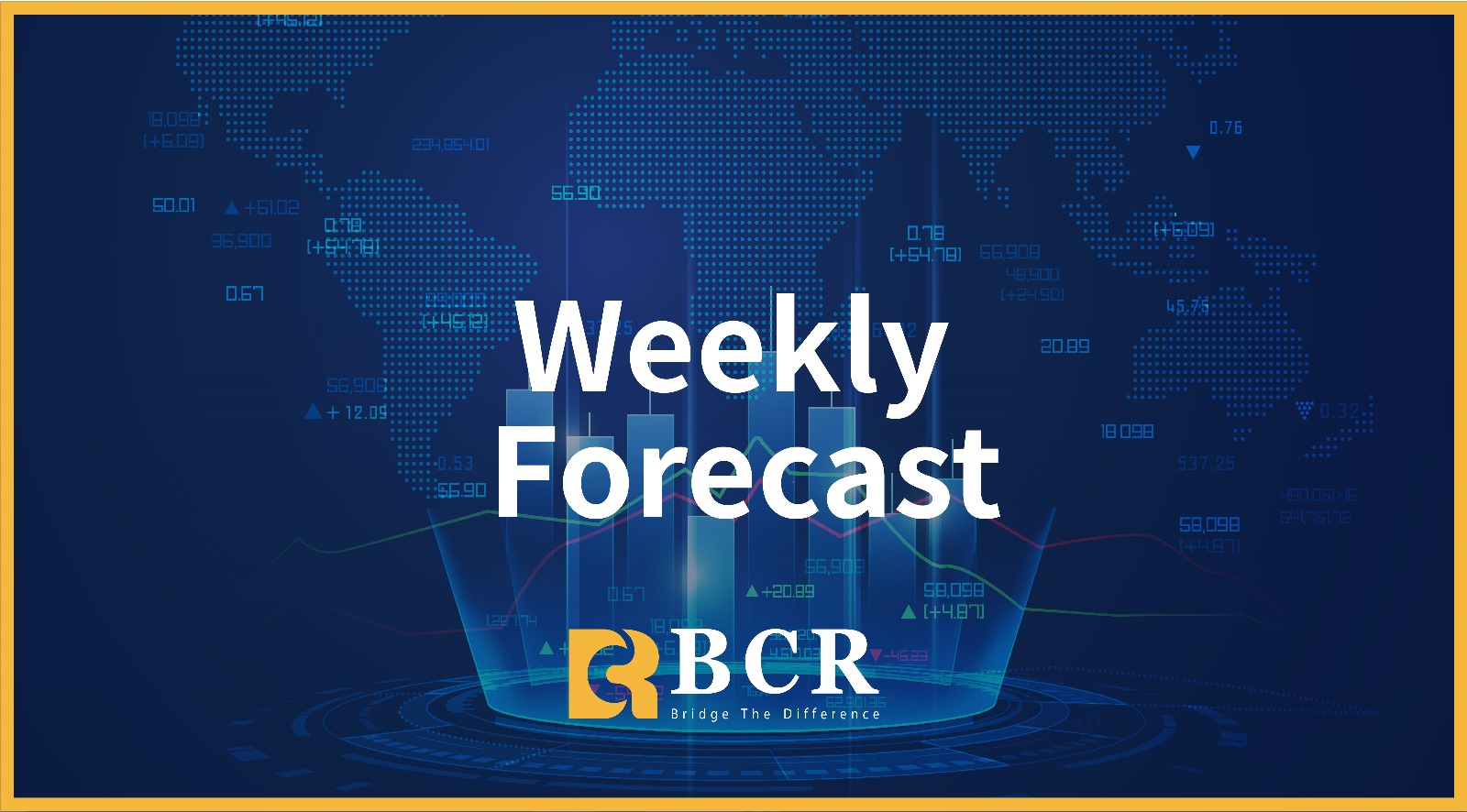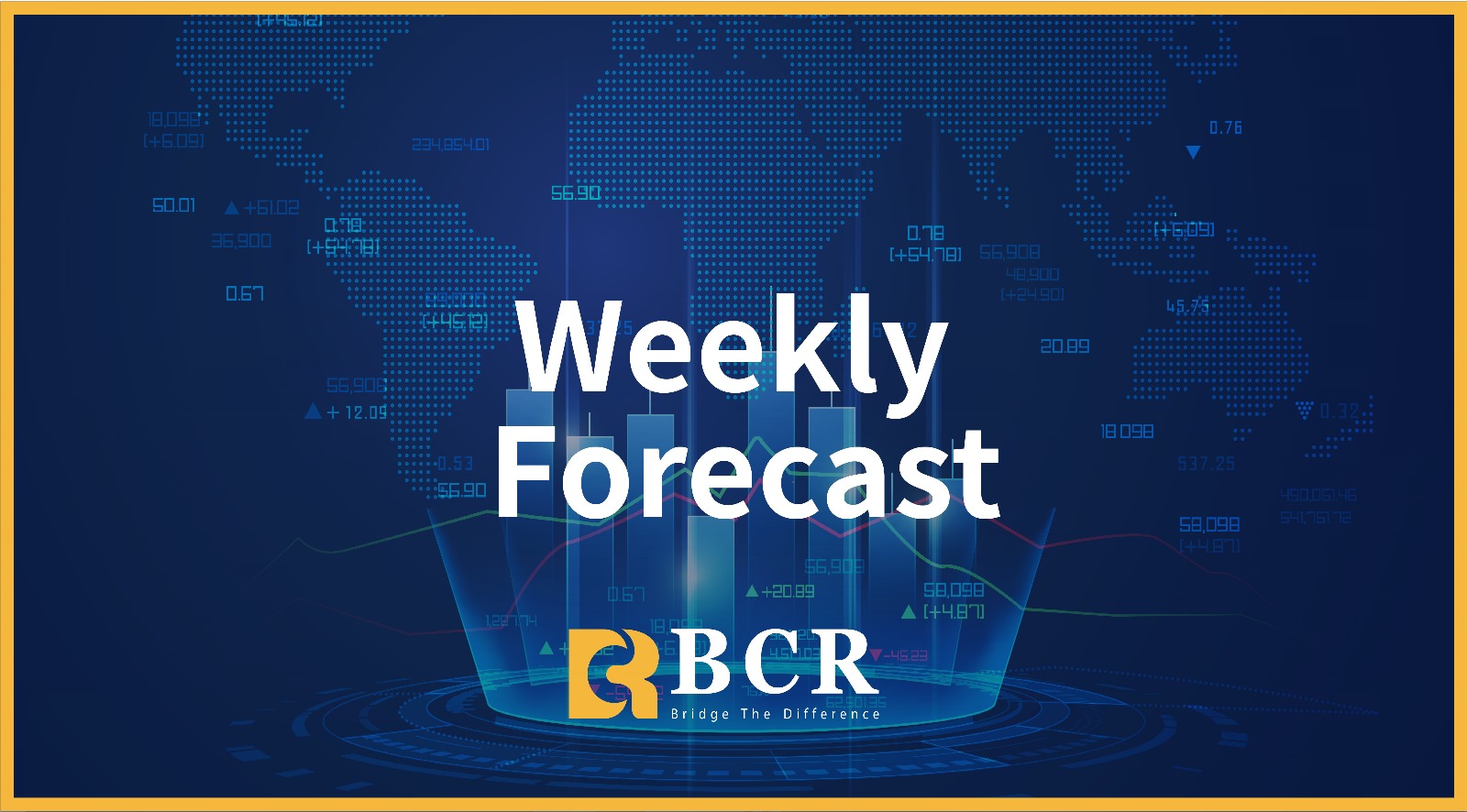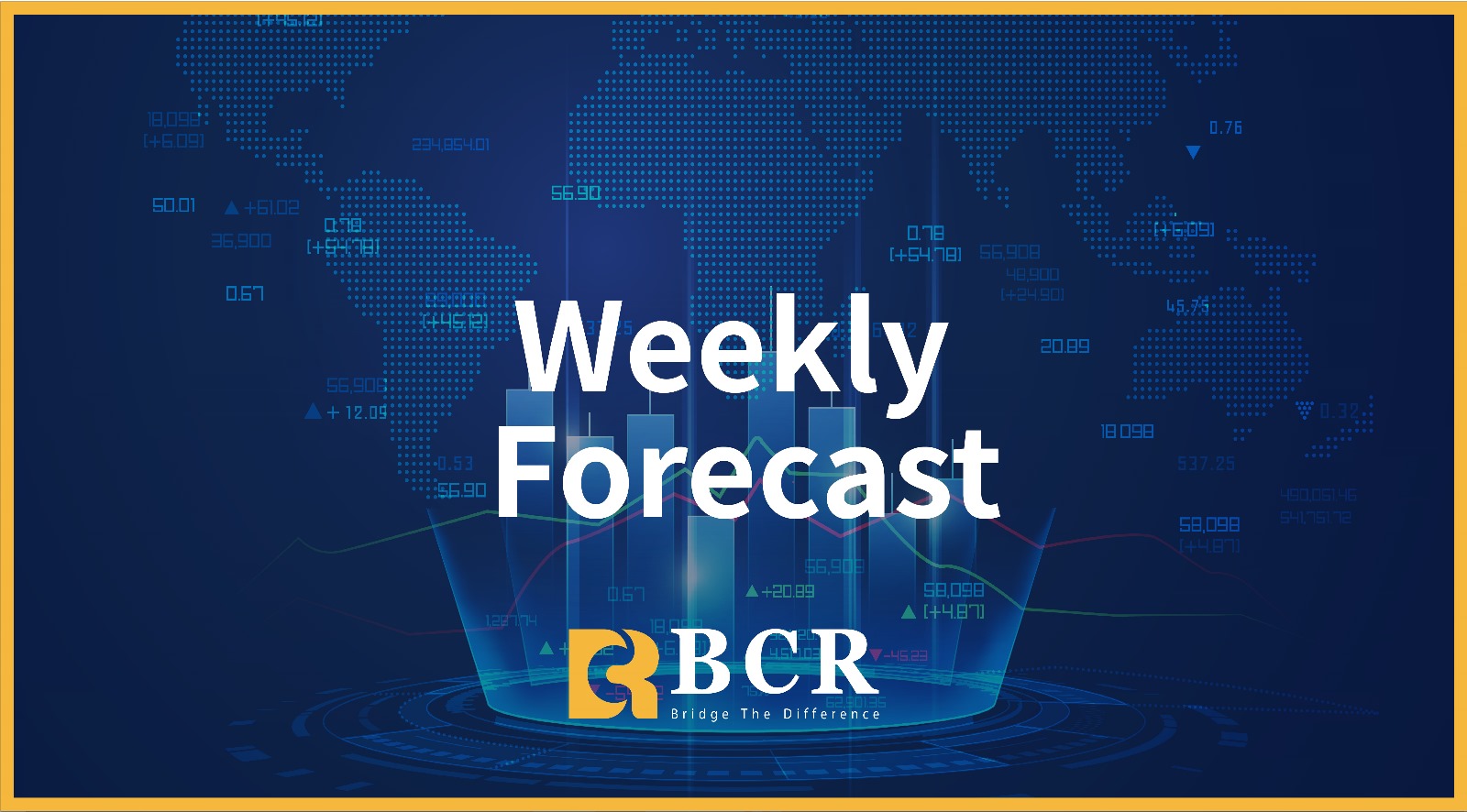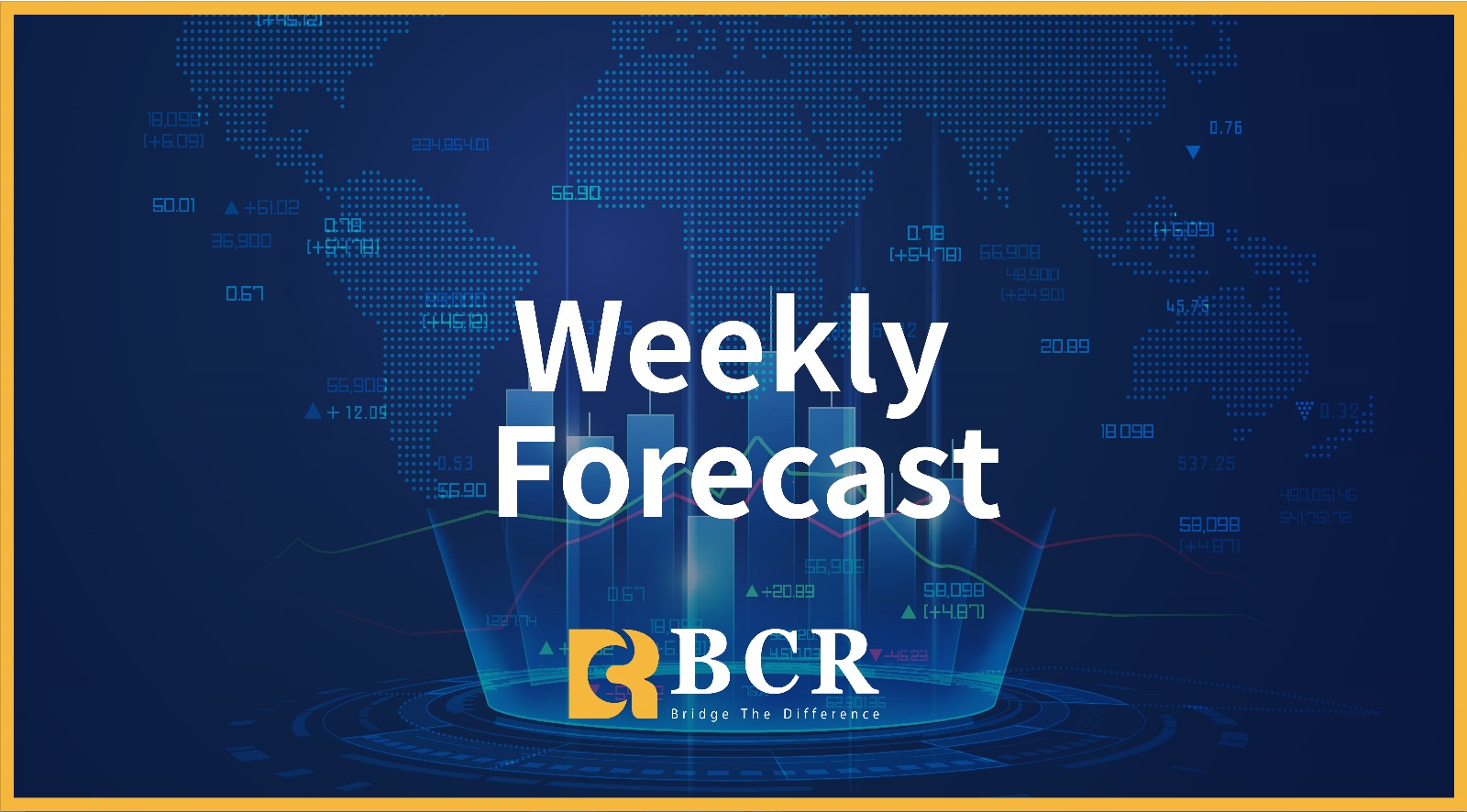





0
Last week, strong employment data not only pushed up the dollar and U.S. Treasury yields, but also significantly weakened market expectations of an early rate cut by the Federal Reserve. Strong employment data directly pushed up the dollar and U.S. Treasury yields. The dollar index rose on Thursday, while the two-year Treasury yield climbed 9.7 basis points to 3.789%, and the ten-year Treasury yield also rose to 4.346%. The stronger dollar makes gold less attractive to overseas buyers because gold denominated in dollars becomes more expensive.
The massive tax cut and spending bill passed by the Trump administration last week brought new variables to the financial market. The bill is expected to increase U.S. debt by $3.4 trillion over the next decade. However, the market warns that the new debt and significant tax cuts may increase inflationary pressures, especially if the job market remains strong. Rising inflation expectations are usually good for gold, but the current trend of a stronger dollar and rising U.S. Treasury yields has temporarily overshadowed this positive.
On the other hand, U.S. Treasury Secretary Benson dropped a bombshell in an interview with CNBC: The Trump administration will officially launch the search for a successor to Federal Reserve Chairman Powell this fall. This news not only attracted widespread attention from the market and the media, but also added more uncertainty to the future direction of US economic policies.
This interview by Bessant undoubtedly dropped a bombshell on the US economy and political arena. Powell's stay or departure has become the focus; the statement that the tariff policy has not caused inflation attempts to calm market concerns; the future direction of the Fed's interest rate policy may affect the global financial market; and Bessant's potential role has also added more drama to this incident.
Review of market performance last week:
The three major US stock indexes hit record highs last week against the backdrop of the unexpectedly strong US non-farm payrolls report in June and the resilience of the labor market. The S&P 500 and Nasdaq set new closing records for the third consecutive trading day. Although the strong employment data almost extinguished the possibility of the Fed's July rate cut, chip stocks and AI sectors strongly pulled up technology stocks as a whole, and Nvidia approached a new global market value record. The Dow Jones Industrial Average closed up 344.11 points, or 0.77%, at 44,828.53 points; the S&P 500 closed up 51.93 points, or 0.83%, at 6,279.35 points; and the Nasdaq Composite rose 207.97 points, or 1.02%, to 20,601.1 points.
Last week, spot gold is expected to record a respectable weekly increase of nearly 2%. Currently trading around $3,335 per ounce, the driving force behind this wave of gold price increases is the smooth passage of the massive tax cut and spending bill promoted by US President Trump in Congress, which has aroused market concerns about the US fiscal situation. At the same time, the continued weakness of the US dollar index has further provided support for the rise in gold prices. As a traditional safe-haven asset, gold continues to be supported by bargain hunting.
Silver prices closed at $36.940 per ounce last week, close to a 13-year high, as rising global trade tensions drove demand for safe-haven assets. Secondly, the rise in silver prices was influenced by a stronger-than-expected U.S. June jobs report, which eased recession fears and reduced pressure on the Federal Reserve to cut interest rates in the short term.
The U.S. dollar index closed below the 97 mark again last week as concerns about trade policy resurfaced. President Trump announced plans to start sending letters on trade matters, which could set unilateral tariff rates before the July 9 negotiation deadline, injecting new uncertainty into global markets. Meanwhile, the House of Representatives passed Trump's massive tax cut and spending bill, which increases long-term fiscal risks.
The dollar closed slightly below $1.18 against the euro, but closed higher for the second consecutive week as investors turned their attention to trade developments and new signals from ECB policymakers. Policymakers are acting cautiously amid ongoing global trade uncertainty and the euro's recent strength.
The yen was supported by a weaker dollar to around 144.50 last week as concerns about tariff policy again weighed on market sentiment. President Trump announced plans to start sending letters on trade matters, which could set unilateral tariff rates.
The British pound edged down around 0.50% against the U.S. dollar last week to around 1.3650 as fiscal concerns continued to weigh on the currency. Cautious risk sentiment, stronger-than-expected U.S. nonfarm payrolls data and political uncertainty in the UK combined to keep the British pound on the defensive, with trading conditions remaining weak as U.S. markets were closed for the Independence Day holiday, limiting volatility in the pair. The Australian dollar held steady for a second week last week, closing around $0.65551, close to an eight-month high, despite widespread expectations that the Reserve Bank of Australia will implement its third rate cut of the year at its monetary policy meeting on July 8. The Australian dollar has risen more than 6% so far this year, supported by broad U.S. dollar weakness.
WTI crude oil rebounded around 1.80% to $65.65 a barrel last week, rebounding from its biggest weekly drop in more than two years. Traders are weighing the possibility of further increases in oil production at a meeting of OPEC+ later this week. The group plans to increase production by another 411,000 barrels per day in August, raising concerns about oversupply.
Bitcoin held firm near $109,000 during trading hours last week, hitting the $110,000 mark mid-week as better-than-expected jobs data pushed stocks to record highs and tempered expectations of a Fed pivot. Bitcoin needs to maintain momentum as it approaches its all-time high, otherwise a drop back to around $108,000 could trigger a bearish trend. It is currently about 2.5% below its all-time high of $111,970.
The 10-year U.S. Treasury yield rose nearly 6 basis points to 4.34% on Thursday after a stronger-than-expected jobs report led investors to reduce bets on the Federal Reserve cutting interest rates this year. President Trump is likely to announce his choice for the next Fed chairman in September or early October, which could steer monetary policy in a more dovish direction.
Market Outlook This Week:
This week, financial markets will usher in a series of key events, especially the Fed minutes and the July 9 tariff exemption deadline, which may trigger sharp fluctuations in the foreign exchange market. The policy directions of central banks are clearly divergent, and major non-US currencies are facing their own interest rate or data pressures. Traders are focusing on whether the Fed hints at a rate cut, whether UK GDP boosts confidence, and the policy direction of the Reserve Bank of Australia. Overall, the market is tight and sentiment is volatile. Once there is any disturbance, the exchange rate may react quickly.
On the other hand, July 9 is the deadline for the tariff exemption period set by the Trump administration. If no agreement is reached with major trading partners by then, market expectations will quickly reflect the rising risk aversion sentiment, and the US dollar may benefit, but it may also trigger sharp fluctuations in the exchange rate market.
In addition, the OPEC meeting is expected to be held on July 5, and expectations for crude oil production and price adjustments will have a key impact on the trend of the Canadian dollar. As a resource-based currency, the Canadian dollar is extremely sensitive to the energy market, and traders will pay close attention to the results of the meeting to determine the direction of the market.
Tax reform "ammunition" VS tariff "air strike", who has the upper hand in the US dollar long-short duel?
Recently, the trend of the US dollar index has been driven by multiple fundamental factors. First, Trump's tariff remarks continue to ferment, and market concerns about the outlook for global trade have intensified. Trump announced on Thursday that he would send tariff notification letters to multiple trading partners, which undoubtedly increased market uncertainty. Risk aversion spread in the market. Against this background, the attractiveness of the US dollar as a traditional safe-haven asset was somewhat suppressed.
At the same time, the tax reform bill promoted by Trump has become another focus of market attention. The bill, which is expected to increase US debt by $3.3 trillion, has been passed by Congress. In the short term, the bill may inject vitality into the US economy by stimulating consumption and investment, thereby providing some support for the US dollar. However, in the long run, the high debt burden brought by the bill has caused market concerns. It may further limit the potential for US economic growth. These factors make the market lack confidence in the long-term strength of the US dollar.
In addition, the continued tension between Russia and Ukraine has also added geopolitical risks to the market. Although the US dollar usually benefits when risk aversion heats up, the current geopolitical uncertainty and tariff rhetoric have made the market more inclined to wait and see rather than bet on the US dollar unilaterally.
In terms of market sentiment, traders are generally cautious about the short-term trend of the US dollar index. In the short term, the US dollar is under the double pressure of tax reform and tariff rhetoric. The low trading volume during the holiday has amplified the uncertainty of volatility. It is recommended to pay close attention to the market reaction after the opening of Monday. After the US dollar index fell below 97.00, the short-selling signal on the technical side became more and more obvious, and it is difficult to have a trend market in the short term.
Looking forward to the next week, the trend of the US dollar index will be highly dependent on the further evolution of fundamental news and technical breakthroughs. The US dollar may get some support at a low level and try to rebound above 97.00. However, the current weak pattern of the US dollar index is difficult to reverse in the short term. If market concerns about high debt and tariff rhetoric continue to heat up, the US dollar index may further fall to 96.00 or even lower. In addition, the progress of the situation between Russia and Ukraine and the change of risk appetite in the global market will also have an important impact on the trend of the US dollar.
In summary, under the current dual pressure of fundamentals and technical aspects, the US dollar index is likely to maintain a range-bound pattern in the short term. Traders should remain patient and wait for the market trading volume to recover after the holiday and the key news to become clearer in order to capture a clearer trend direction.
The US tax cut bill will trigger a fiscal crisis; gold prices have risen sharply?
The massive tax cut and spending bill promoted by US President Trump was successfully passed by Congress last week, triggering market concerns about the US fiscal situation. At the same time, the continued weakness of the US dollar index further helped the rise in gold prices. As a traditional safe-haven asset, gold continues to be supported by bargain hunting.
The tax cut bill is expected to add another $3.4 trillion to the US debt of $36.2 trillion over the next decade. This huge fiscal burden has exacerbated market concerns about the US economic outlook. The bill has not improved the US fiscal situation. In the long run, it will put pressure on the US dollar, and gold as a safe-haven asset will benefit from it.
Overall, fiscal concerns caused by the US tax cut bill, the weakening of the US dollar, and the potential impact of Trump's tariff policy are jointly driving the upward trend of gold prices. The attractiveness of gold as a safe-haven asset is increasing, especially against the backdrop of increasing global economic uncertainty. In the future, as the tariff policy is gradually implemented and the Fed's monetary policy becomes clearer, the gold market may usher in more opportunities for growth.
Looking ahead, the gold market will be driven by multiple factors. First, the Fed's monetary policy path remains key. If the rate cuts pick up in September, gold may see a rebound. Second, the Trump administration's fiscal and trade policies will continue to affect market sentiment. Tax cuts and tariffs may push up inflation expectations in the short term, thereby providing support for gold, but the strength of the dollar and rising U.S. bond yields may continue to put pressure on gold prices. In addition, global geopolitical and economic uncertainties remain long-term positive factors for gold. Although the current market's expectations for the Fed's early rate cuts have weakened, signs of a global economic slowdown may prompt investors to reallocate funds to safe-haven assets.
Oil prices remain in a narrow range; the market enters a wait-and-see state
Last week, the crude oil market was in a critical window for long-short game: the phased easing of the geopolitical situation offset expectations of increased supply, and macro policy uncertainty cast a shadow on the demand outlook. Market sentiment has become cautious amid the interweaving of Iran's nuclear commitments, OPEC+ production decision expectations, and macro policy uncertainty, and technically, different cycle charts show divergent long and short signals.
Although demand expectations have improved in the near term, the pressure on the supply side cannot be ignored. According to four OPEC+ representatives, the organization plans to increase production by 411,000 barrels per day from August to regain global market share. This move may impose an upward limit on current crude oil prices. OPEC+'s strategy is to gradually restore production capacity to seize more market share, especially against the backdrop of signs of a rebound in global demand.
The current oil price is in a stalemate due to the interweaving of supply and demand factors. On the one hand, the strong US employment data has boosted confidence in crude oil demand, but on the other hand, the reality of OPEC+'s production increase and the uncertainty of Trump's tariff policy have brought double disturbances to the market. It is worth noting that if trade frictions between major economies such as Asian countries and the European Union and the United States intensify, it may suppress global demand expectations, thereby creating new downward pressure on oil prices.
In the short term, the crude oil market will continue to seek a balance between weak demand and geopolitical risks. Although the situation in Iran and trade stability support the market, the actual performance of US crude oil inventories and gasoline consumption is the key to determining the direction of oil prices.
If the US economic data continues to be poor, it may push the Federal Reserve to cut interest rates ahead of schedule, thereby supporting oil prices. However, if inventories continue to rise, oil prices may find it difficult to maintain a rebound.
Conclusion:
Trump's tax and spending bill successfully avoided the crisis of debt default in the short term, but its high fiscal costs and cuts in the medical field have laid a greater hidden danger for the future. Market concerns about rising US bond yields and inflationary pressures are intensifying, and the actions of the "Bond Guardians" show that investors' dissatisfaction with the health of the US fiscal health is rising. In the future, the United States needs to find a balance between economic growth, debt management and fair distribution to avoid a more serious fiscal crisis. For investors, paying close attention to the subsequent impact of the bill and the dynamic changes in the market will be the key to dealing with uncertainty.
In the short term, the tax cuts and spending increases in the bill are expected to create more profit opportunities for companies and drive the stock market further higher. It may stimulate growth in industries such as technology and manufacturing, injecting new vitality into the economy.
However, the long-term impact of the bill is not optimistic. The additional $3.4 trillion in debt and the reduction of $4.5 trillion in tax revenue will further deteriorate the US fiscal situation. Market concerns about additional bond supply could push up borrowing costs, while rising inflationary pressures could force the Federal Reserve to adjust its monetary policy, further affecting global financial markets.
Overview of important overseas economic events and matters this week:
Monday (July 07): Eurozone July Sentix Investor Confidence Index; Eurozone May Retail Sales Month/Year Rate (%)
Tuesday (July 08): Japan's May trade balance-Central Bank based on customs data seasonally adjusted (billion yen); Australia's July 8 cash rate (%); US New York Fed 1-year inflation expectations in June (%); Reserve Bank of Australia Chairman Bullock holds a monetary policy press conference
Wednesday (July 09): US API crude oil inventory change for the week ending July 4 (million barrels); New Zealand's official cash rate decision on July 9 (%); US May wholesale inventory monthly rate final value (%); US July IPSOS main consumer sentiment index PCSI; Reserve Bank of New Zealand Chairman Orr holds a monetary policy press conference
Thursday (July 10): Japan's June PPI monthly rate (%); US initial jobless claims for the week ending July 5 (million); Federal Reserve releases monetary policy meeting minutes ;
Friday (July 11): UK GDP monthly rate in May (%); UK industrial output monthly rate in May (%); UK merchandise trade account in May - seasonally adjusted (billion pounds)
Disclaimer: The information contained herein (1) is proprietary to BCR and/or its content providers; (2) may not be copied or distributed; (3) is not warranted to be accurate, complete or timely; and, (4) does not constitute advice or a recommendation by BCR or its content providers in respect of the investment in financial instruments. Neither BCR or its content providers are responsible for any damages or losses arising from any use of this information. Past performance is no guarantee of future results.
Lebih Liputan





Pendedahan Risiko:Instrumen derivatif diniagakan di luar bursa dengan margin, yang bermakna ia membawa tahap risiko yang tinggi dan terdapat kemungkinan anda boleh kehilangan seluruh pelaburan anda. Produk-produk ini tidak sesuai untuk semua pelabur. Pastikan anda memahami sepenuhnya risiko dan pertimbangkan dengan teliti keadaan kewangan dan pengalaman dagangan anda sebelum berdagang. Cari nasihat kewangan bebas jika perlu sebelum membuka akaun dengan BCR.